There’s something about a palace that just captures our imaginations. Maybe it’s the opulence and luxury they represent or their historical significance. From ancient civilizations, people of authority like kings and queens, have always built themselves opulent palaces to assert the height of their power, and
traditions have continued even to this present day. The palaces are often adorned with stunning architecture, gorgeous ornate halls, and a esthetically crafted walls.Here are 15 of the most beautiful palaces in the world.
15. Topkapi Palace, Turkey
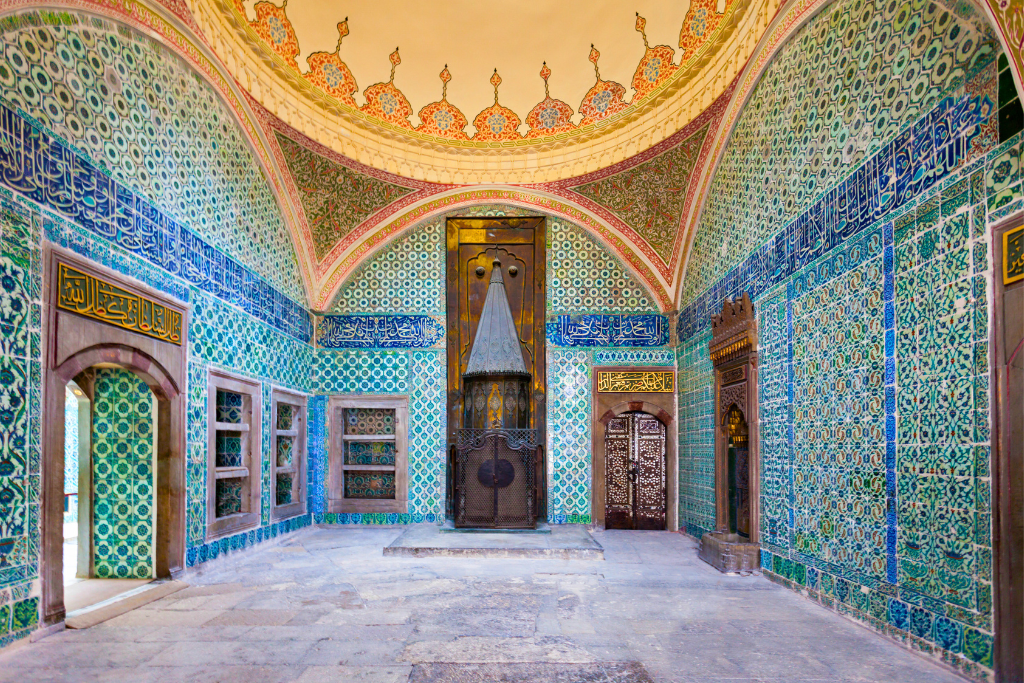
At the height of his reign and conquest, Sultan Mehmed the conqueror ordered the construction of the
Topkapi Palace. This Palace is one of the most beautiful buildings in the world. Situated on a hill overlooking the Bosphorus Strait, The palace complex is vast, and its numerous courtyards, gardens, and buildings are a testament to the power and wealth of the Ottoman Empire.This stunningly beautiful palace served as the administrative building and as a primary residence o the Ottoman sultans for over 400 years, until 1856 when Sultan Abdulmejid decided to move his residence to the newly built Dolmabahçe Palace. . Today, the Topkapi Palace is a museum that houses an incredible collection of artifacts from the Ottoman period. It’s true beauty lies in its architecture and setting. The palace complex is a masterpiece of Islamic design, and its views of the city and Strait are simply breathtaking. For anyone who loves history and architecture, Topkapi Palace is a must-see.
14. Pena Palace, Portugal

The castle started in the Middle Ages when a chapel dedicated to Our Lady of Pena was built on the top of the hill above Sintra. Then, King Manuel I constructed a monastery on the same site, which he donated to the Order of Saint Jerome. The monastery was damaged by lightning and the Great Lisbon Earthquake of 1755. However, the chapel and its works of marble and alabaster attributed to Nicolau Chanterene escaped without significant damage. In the 19th century, King consort Ferdinand II decided to acquire the old monastery, all of the surrounding lands, the nearby Castle of the Moors and a few other estates in the area. Transforming the remains of the monastery into a palace that would serve as a summer residence for the Portuguese royal family The Pena Palace is noted for its extensive use of colorful Neo-Manueline style architecture, which is a mix of Moorish and Gothic Revival styles. The exterior of the palace is adorned with intricate stonework, statues, and murals. The interior of the palace features an opulent mix of furniture, tapestries, and art from different cultures and eras. While the palace does require some upkeep, its overall condition is excellent considering its age. In short, the Pena Palace is a must-see for anyone visiting Portugal.
13. The Royal Palace of Caserta, Italy

When King Charles VII of Naples saw architect Luigi Vanvitelli’s grandly scaled model for the Caserta, it filled him with emotion “fit to tear his heart”. However, Charles never slept a night at the Reggia, as he abdicated in 1759 to become King of Spain, and the project wacarried to only partial completion for his third son and successor, Ferdinand IV. Once famed as the largest built palace in Europe, The palace is an opulent example of Baroque architecture, its massive size and sumptuous decor are breathtaking, and its expansive gardens are a peaceful oasis. The Royal Palace is also home to an impressive art collection, which includes paintings by famous artists such as Leonardo da Vinci, Raphael, and Caravaggio.Visitors to the palace can tour the stately rooms, stroll through the manicured gardens, and enjoy the wonderful views of Mount Vesuvius and the surrounding countryside. The Royal Palace of Caserta is truly a magnificent sight to behold.
12. Mysore Palace, India
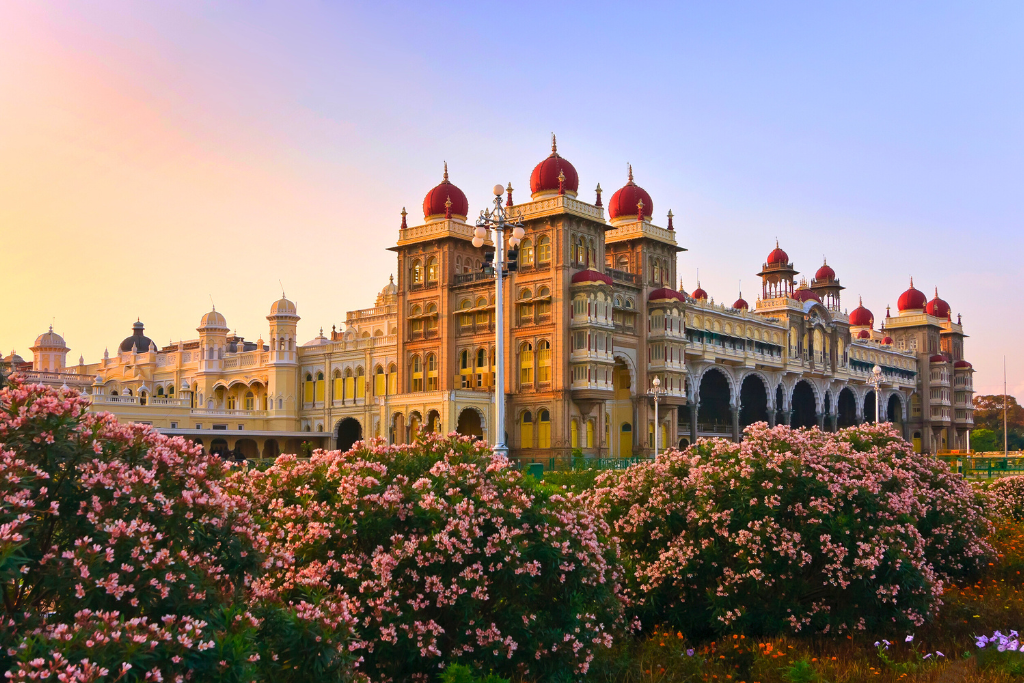
When the last palace, now known as the Wooden Palace, burned to ashes during a wedding in 1896. Maharaja Krishnaraja Wodeyar IV and his mother Maharani commissioned British architect Henry Irwin to build a new palace. The new Mysore Palace was completed in 1912. The Mysore Palace is a stunning example of Indo-Saracenic architecture, blending elements of Hindu, Muslim, and Gothic styles. The palace is located in the city of Mysore in southern India and was the sea of the ruling Wodeyar dynasty for centuries before the fire incident. Today, the palace is one of the most popular tourist attractions in India, attracting visitors from all over the world. The main facade of the Palace is imposing, with a series of intricate arches and domes. The interior is no less impressive, with beautiful stained glass windows, marble floors, and carved wood ceilings. Even more intriguing are the many secret passages and hidden rooms that are said to be within the palace walls.
11. Alhambra Palace, Spain
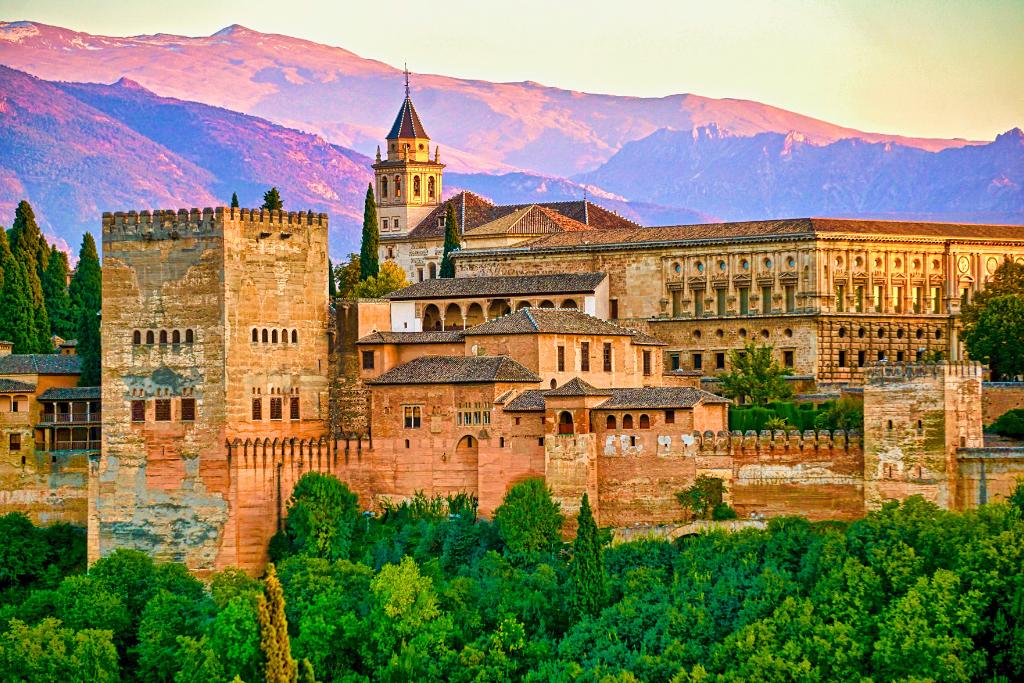
The Alhambra Palace is a beautiful example of Moors architecture in Granada, Spain. Built when the region of Granada was dominated by the Zirids, a Sanhaja Berber group ruled parts of North Africa. These Moorish people built the Alhambra which served as a royal palace for the Nasrid sultans. The palace is made up of four main parts: the Mexuar, the Comares Palace, the Lions Court, and the Generalife. Each part is beautifully decorated with intricate tiles, arches, and carved stonework. Visitors can also see many Arabic inscriptions throughout the palace. The Alhambra Palace is one of the most popular tourist destinations in Spain and is a UNESCO World Heritage Site. It is definitely worth a visit if you are ever in Granada!
10. Schönbrunn Palace, Vienna, Austria

Schönbrunn Palace is one of the most beautiful andiconic buildings in Vienna, Austria. The palace was built in the early 18th century for the Habsburg dynasty, and it served as their summer residence for many years. The palace is set in a sprawling parkland, and it features an ornate Baroque exterior with a grandiose staircase leading up to the main entrance. Inside, the palace is just as impressive, with lavish state rooms decorated with opulent furnishings and artwork. One of the most famous attractions at the palace is the Gloriette, a monumental folly that offers stunning views over the city of Vienna. Following the downfall of the Habsburg monarchy in November 1918, the palace became the property of the
newly founded Austrian Republic and was preserved as a museum. After World War II and during the Allied Occupation of Austria, Schönbrunn Palace was requisitioned to provide office space for both the British Delegation to the Allied Commission for Austria, and for the headquarters of the small British Military Garrison present in Vienna. With the reestablishment of the Austrian republic in 1955, the palace once again became a museum.
9.Winter Palace, St. Petersburg, Russia
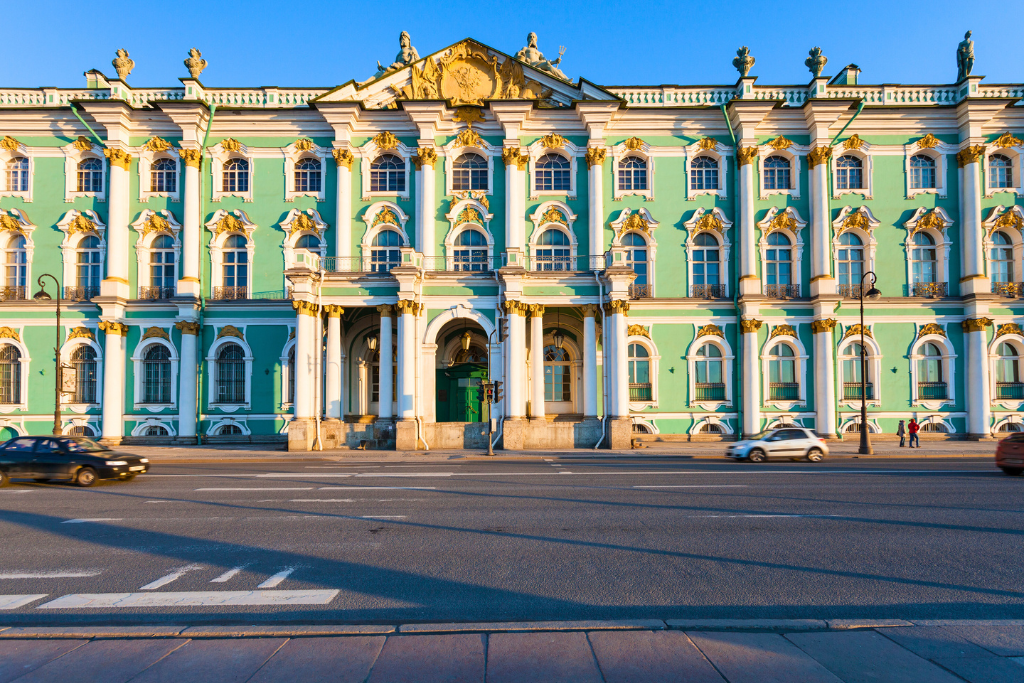
The Winter Palace in St. Petersburg, Russia is an absolutely stunning piece of architecture. Its ornate
facade and grandiose interior are truly a sight to behold. Commissioned by the Russian tsar, Empress Elizabeth, the Winter Palace served as the primary residence of the royal family until the Russian Revolution in 1917. Today, it houses the Hermitage Museum which is open to the public and one of the most popular tourist attractions in St. Petersburg. Visitors can admire the lavish state rooms, which are filled with beautiful furniture and works of art, or take a stroll through the expansive gardens. Regardless of how you choose to spend your time at the Winter Palace, it is sure to be a memorable experience.
The palace is a symbol of imperial Russia, and it’s beauty is truly unparalleled.
8. Buckingham Palace, London
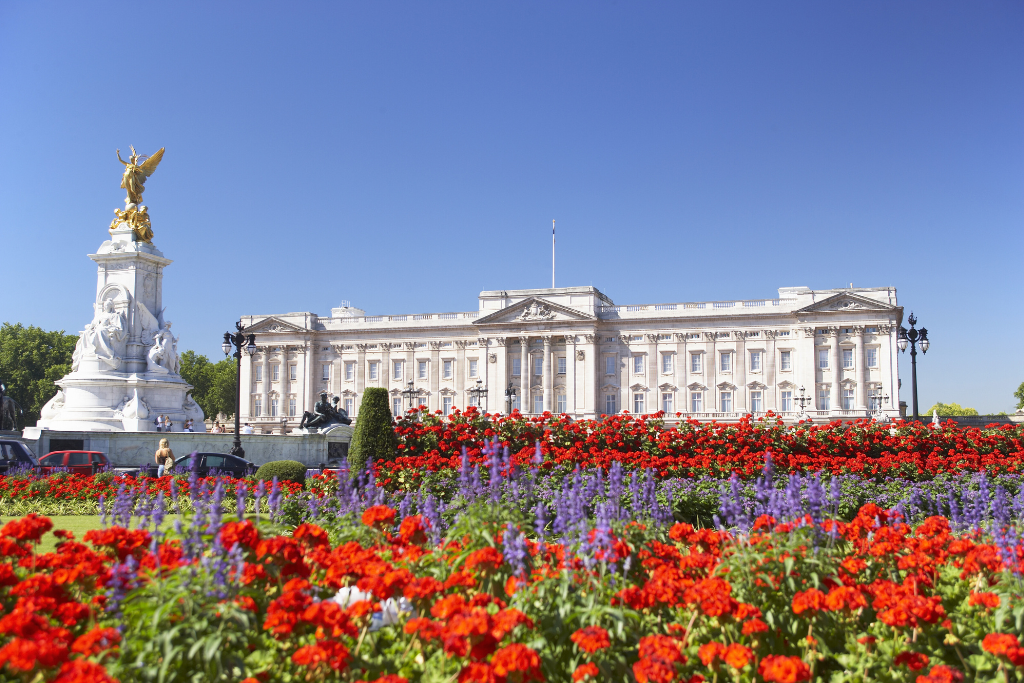
Buckingham Palace is the London residence of the United Kingdom’s royal family. Located in the City of
Westminster, the palace is a favorite tourist destination, attracting over half a million visitors each year. Unlike many palaces around the world which had been converted to museums because of the demise of
empires that built them, the Buckingham palace is currently a working office, and the site of many official
events and ceremonies for the British royals. Despite it busy schedule, the palace remains one of the most beautiful buildings in London. Its neoclassical facade is adorned with sculpted reliefs, and its state rooms are filled with paintings and tapestries. The grounds are meticulously landscaped, and include a lake where swans swim. Buckingham Palace is a stunning example of British architecture, and a must-see for any visitor to London.
7. Palace of Versailles, France
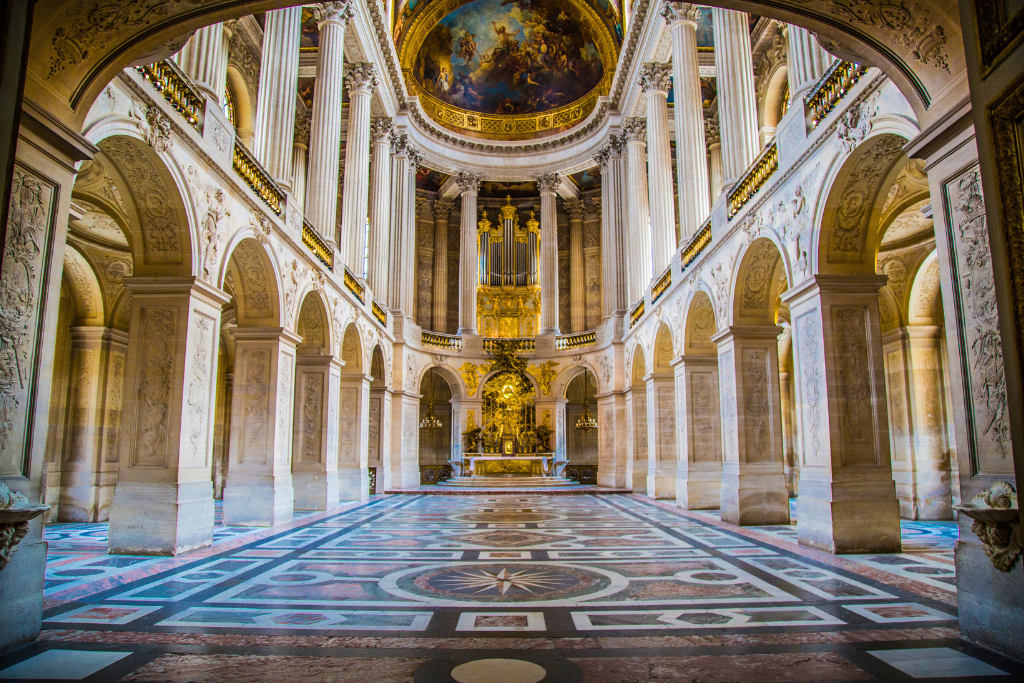
In 1623 King Louis XIII of France, built a hunting lodge on a hill which is 12 miles west of Paris and 10 miles from his primary residence. His primary residence at the time was scorned as being generally unworthy of a king, and one of his courtiers, François de Bassompierre, wrote that the lodge “would not inspire vanity in even the simplest gentleman”. 7years later, architect Philibert Le Roy replaced the lodge
with a château for Louis XIII who forbade his queen, Anne of Austria, from staying there overnight.
After the king’s demise, Louis XIV then built the Palace of Versailles on this same property. The palace was intended to be a grand display of the king’s power and wealth. Covering more than 800 hectares, the Palace complex includes hundreds of rooms, several gardens, and a massive park. Visitors to the palace can explorethe lavish state apartments, view the famous painting by Rubens and Velázquez, and stroll through the manicured gardens. The Versailles is regarded as one of the most beautiful places in the world, receiving over 15 million tourists every year.
6. Forbidden City, China
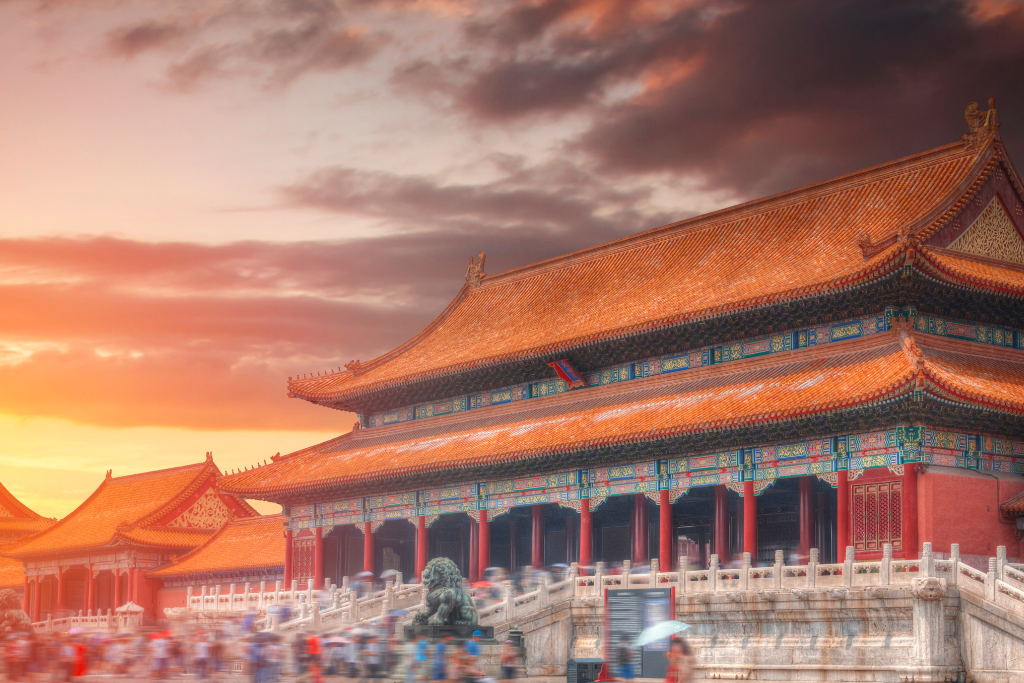
The Forbidden City is the palace of the former Chinese imperial dynasty. Located in Dongcheng District, at the center of the Imperial City of Beijing. It is surrounded by numerous opulent imperial gardens and temples including the 54-acre Zhongshan Park. The name “Forbidden City” was given because commoners were not allowed to enter. It is the world’s largest palace complex and has been
declared a World Heritage Site. What makes the Forbidden City so beautiful are its many courtyards,
gardens, and temples. It is a perfect example of traditional Chinese architecture with its red walls and
yellow roofs. The buildings are symmetrical and have an overall balance that is pleasing to the eye. There is a sense of order and calm when looking at the Forbidden City which makes it a truly beautiful place.
5. Grand Palace, Bangkok, Thailand

Construction of the Grand palace began on 6 May 12, at the order of King Rama I, the founder of the Chakri Dynasty, when he moved the capital city from Thonburi to Bangkok. After construction, this beautiful palace has been the home of the Thai royal family ever since. The grandeur of the palace is evident in its size; the complex covers an area of over 218,000 square meters. It is adorned with
intricate details, such as gilded stucco work, painted murals, and carved marble pillars. It has served as a
symbol of power for Thailand’s ruling monarchy for centuries, and it remains an important cultural landmark for the people of Bangkok. Visitors from all over the world come to marvel at the Grand Palace’s
beauty, and it is truly a sight to behold.
4. Drottningholm Palace, Stockholm
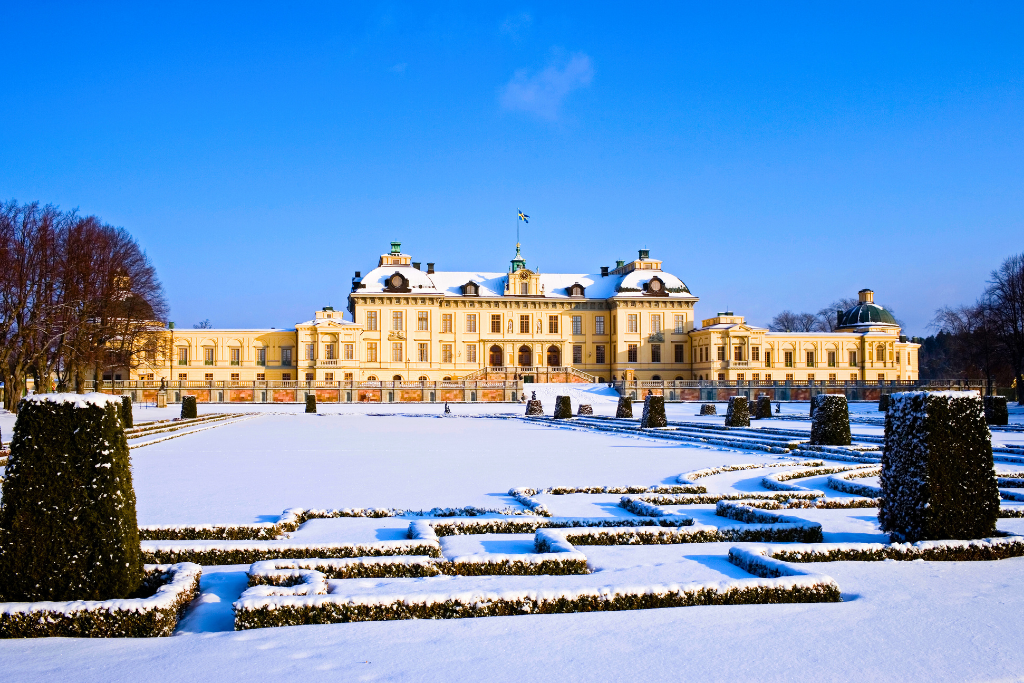
The name Drottningholm, meaning “Queen’s islet” came from the original renaissance building, a stone Palace built by John III of Sweden in 1580 for his queen, Catherine Jagiellon. In 1661, Queen Hedwig Eleonora engaged the architect “Nicodemus the Elder” to design and rebuild the castle, after a wildfire burnt down the original castle. Work began earnestly and almost completed by 1681 when Nicodemus died. His son, Nicodemus Tessin the Younger continued his work and completed the elaborate interior designs. The Drottningholm Palace is now considered one of the most beautiful royal residences in the world. Situated on an island in Lake Mälaren, it features a stunning Baroque garden, as well as a theater that is still used today. The palace itself is a masterful example of Swedish architecture, with its characteristic yellow facade and red roofs. The interior is just as impressive, with sumptuous furnishings and intricate woodwork.
3 . Chambord Palace (Chambord – France)

There is no consensus on who actually designed Château de Chambord. Even though the design is
currently attributed to Domenico da Cortona and believed to have been influenced by Leonardo da Vinci.
The Chambord Palace is an incredible piece of architecture for a number of reasons. Firstly, the building itself is absolutely massive, with over 400 rooms spread across 13 floors. Secondly, the exterior is covered in intricate carvings and detailed stonework, making it a sight to behold. The interior is just as lavish as the exterior, it is sumptuously adorned with beautiful works of art, and ornate furniture. The grounds of the palace are stunning, with manicured gardens, fountains, and sculptures. If you ever dreamt or fantasize being a royal, this type of palace is one to make your fairytale fantasy more glamorous.
2. The Royal Palace of Brussels, Belgium

The royal palace of Brussels is the official residence of the King and Queen of Belgium. Located in the historic center of the city, the palace has been a witness to some of the most significant events in Belgian history.Built in the 18th century, the palace is a fine example of Rococo architecture. Its facade is adorned with statues and friezes, and its interior is filled with sumptuous furniture and tapestries. The palace grounds are also home to a beautiful garden, which is open to the public. In addition to its architectural beauty, the royal palace of Brussels also holds great historical significance. It was here that King Leopold II declared Belgium’s independence from Holland in 1830, and it was here that King Albert I was sworn in as Belgium’s first king after the country’s liberation from German occupation in 1918. Today, the palace is open to visitors from all over the world, who come to marvel at its beauty and learn about its rich history.
1. Wilanów Palace, Poland

The Wilanów Palace in Poland serves as a reminder of the culture of the Polish state before the Polish
partitions that resulted in the elimination of sovereign Poland and Lithuania for 123 years Built by King John III Sobieski in the last quarter of the 17th century. The Wilanow Palace is an example of Baroque architecture that had spread across Europe at that time. The exterior of the palace is adorned with elaborate stonework, and the interior is filled with opulent furnishings. Since the death of King John III, the palace had been passed on to several owners. Every owner changed the interiors of the palace, as well as the gardens and grounds, according to the current fashion and needs. In 1805, the owner Stanisław Potocki, opened Poland’s first museum in a part of the palace.However, during world war II, the palace was damaged and its collections stolen by the german forces. After the war, the palace was renovated and the stolen collections were repatriated. Today, the Wilanów Palace is open to the public, and it is one of the most popular tourist destinations in Poland.



